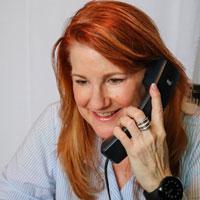Apr 21, 2020
Lessons we’ve learned from our customers
Most advice I’m reading today about staying connected with our older loved ones utilizes old-school techniques like increasing person-to-person communications, organizing “family council” meetings, or virtual visitations using FaceTime, Skype and even Zoom¹. While all good ideas, if the care recipient can’t use the technology directly this may not be achievable with already overburdened and short-staffed facilities.
Other advice focuses on technology that can help older adults, but also states “The bad news is that the people who need those services the most — older adults — may also be the least able to take advantage of them. And while not all older people have problems using new technology, they are more likely to have trouble than any other generation.”² Keys to success are using tech that is geared toward older people to simplify and increase chances of adoption. They recommend tech like smartphones and iPads to communicate with video visits, online grocery ordering (with help from a family member) and many more. But, they also recognize that “Ultimately, all of these tech solutions are only as helpful as a senior’s ability and desire to actually use them.”³
So, what happens when your loved one has an underlying condition like Alzheimer’s or dementia that makes it difficult or even impossible for them to use many technology solutions? How do family members provide virtual caregiving in these times with technology that is simple, yet powerful? The key is in finding technology that is purpose-built for older persons with Alzheimer’s or dementia, technology that can help to provide virtual caregiving.
Stay at Home Example
One of our families has a very active mother with Alzheimer’s. She has channeled some of her incredible energy into her garden, but when she gets restless and needs more activity she takes herself for a walk. Using our “smartphone on a wrist” wearable, her son is notified when she leaves the home, where she is and can call her directly to let her know someone is on the way to pick her up. Given her wandering has increased, our wearable is now a critical part of her family’s ability to care for her virtually. And she thinks she is just wearing a really cool watch!
Assisted Living Example
Another of our families was using our smartwatch when their mother was still at home. Late last year, she moved into assisted living, and they kept using our wearable as the children are located in other states. It was just too convenient a way for the kids to know where she was and to give her a call, wherever they or she were. This is an example of how purpose-built technology is immediately useful (high powered smartphone on your wrist) and easily adopted (every older person has or does wear a watch). The family is reliant upon and delighted with our technology to stay informed and in communication without burdening her facility staff even more.
I hope these real life examples will help more families with memory challenged loved ones during this time. Providing virtual care to persons with Alzheimer’s or dementia is even harder now, but by adding new, simple yet powerful technology, families can have more peace of mind.
There is another curve we need to flatten: the demand for in-person caregivers is already outpacing the supply, resulting in shortages now. By using new, virtual caregiving technology, we can flatten the need for in-person caregivers while providing great care for our loved ones. We have seen some of this shift happening already with telemedicine, and it’s very possible to shift personal caregiving as well. But that’s the subject of my next blog.
Stay safe and stay well.
–written by Shel Symonds
¹https://blog.aarp.org/thinking-policy/the-covid-19-imperative-keep-family-caregivers-and-long-term-facility-residents-connected
²https://www.vox.com/recode/2020/3/19/21185746/covid-19-seniors-apps-amazon-skype-food-delivery
³Ibid

